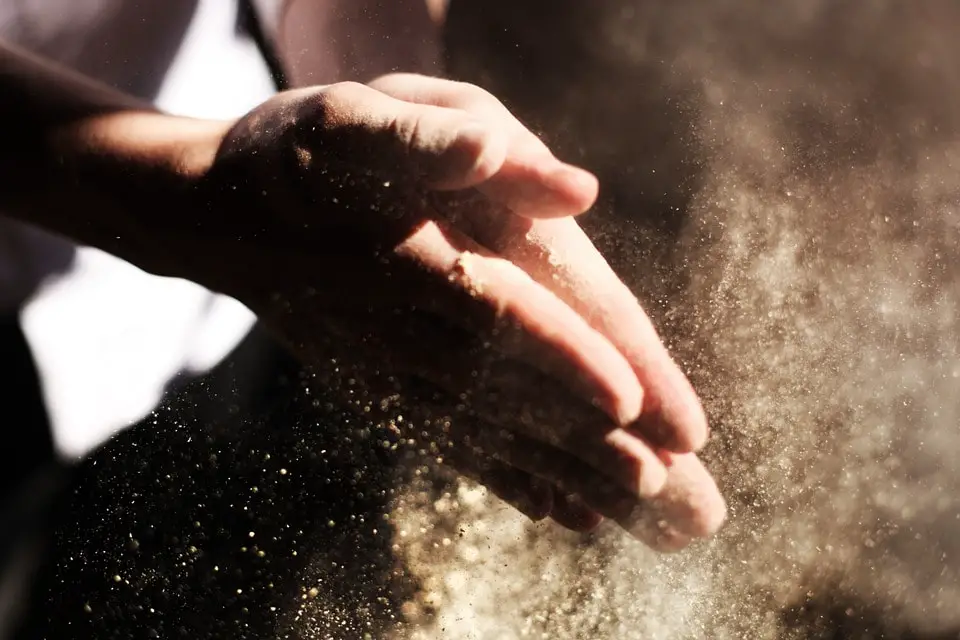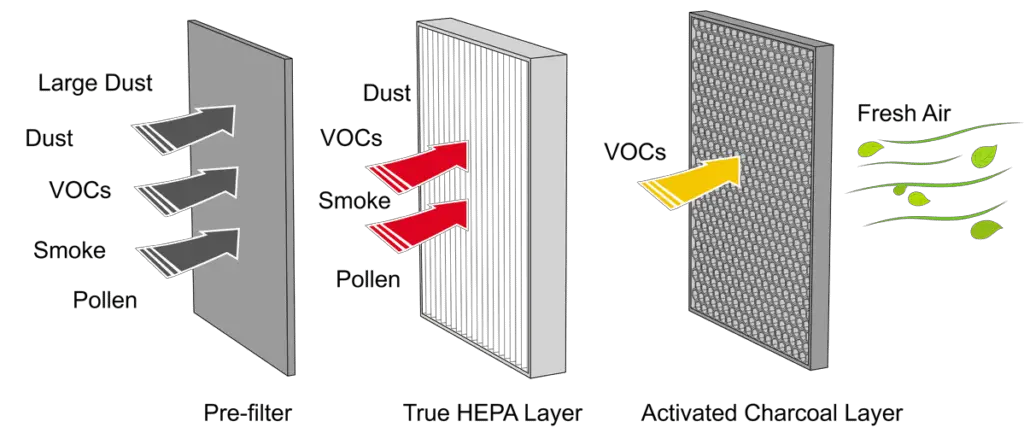Purifiers are excellent when it comes to cleaning contaminants and particles from the air.
They even go as far as removing foul odors and reducing air-borne bacteria and viruses. However, do air purifiers reduce dust, too?
In this article, we’ll look at this significant question and why it’s vital to remove dust from your home.

Do Air Purifiers Reduce Dust?
Many purifiers hold a True HEPA filter as one of the many layers inside. This captures most pollutants, one of which is dust. Studies have shown that this filter can remove up to 99.97% of dust particles that are 0.3 microns in size.
These tiny particles are the ones that end up in our lungs and are the most dangerous to our health. The dust lingers in the air or settles in your carpet or curtains, sometimes hidden deep within fabrics. One slight movement dislodges it into the air, which is where the purifier draws it in to remove it.
How an Air Purifier Can Help Reduce Dust
The reason a purifier is so effective against dust is due to the many filters on the inside. While the activated carbon layer mainly focuses on foul odors and VOCs, the other three layers are effective against dust. Let’s take a look at each one and how they function.
Main Filter
Sometimes purifiers will have a grille or fabric layer on the outside. It isn’t merely for decoration. This section acts as the first filter and the initial defense, removing the largest dust particles before they even enter the device. You can generally wash these clean.
Pre-filter
Before the dust finds its way to the HEPA filter, they’ll encounter a pre-filter. The netting or mesh is larger, capturing the particles that manage to escape the initial layer. You’ll also be able to wash this filter, but it may require replacement from time to time.

HEPA Filter
The HEPA filter is the ultimate item that protects against dust, mostly because it deals with contaminants that are 0.3 microns in size. It’s the final layer in the purifier, after which clean air goes back into the environment through the exhaust. This filter may become clogged and leave a foul smell from the machine, so make sure you maintain it regularly.
What is Dust, and Why Should I Get Rid Of It?
In essence, dust consists of fine particles of which solid matter. It’s everywhere and hard to escape, especially in open areas surrounded by sand, trees, and grass. If you’re a lover of nature, dust may be your most pervasive enemy.
Here are a few examples of each dust type you can encounter and why you should get rid of it.
Pet Dander
Have you sneezed near cats and dogs, or been told that you’re allergic to their hair? It’s a common misconception and one that we’ll quickly clear up. The dander and saliva have proteins that may be triggering your allergies, not the actual substance.
It’s this component that travels with dust at times, causing you to sneeze when the dust reaches your nasal passages. If you don’t remove it from your home, it can irritate your lungs and lead to you becoming sick.
Dust Mites
Mites make a home on fine dust particles when there’s loose skin to be found. After consuming this delicious meal, they often leave droppings that float with the dust in the air. It’s a common cause of allergic reactions, causing issues with your breathing.

Pollen
Pollen is the number one irritant for asthmatics. When flowers bloom, the strong winds sometimes carry fine pollen particles in the air into your home.
It can cause your chest and trachea to swell up, which is something a purifier is excellent at resolving.
Soil
People and pets love to walk soil into the home, which sometimes lodges into the carpet.
As you traverse your house, you break these large particles into smaller ones.
The wind picks them up and you breathe them into your system, making your living space dangerous for your health.
Conclusion
A purifier performs a plethora of functions, one of which is to remove dust from your home. You’ll need the right size for the area, and you must maintain it often. If you look after it, it will look after you.
People Also Ask
We’ve received a few questions from our readers regarding purifiers and how they reduce dust in the home. If you have similar queries, you can browse the FAQs below. Feel free to let us know if there’s anything else on your mind.
There are many reasons you may have dust in your home. From the skin flakes off your back to the dander that floats from your pets to the soil that people trampled into the carpet, dust is an element that’s challenging to combat if you don’t have a dehumidifier.
Dust particles have a nasty habit of surfacing after you’ve already vacuumed. They could be lying on your window sill, the top of your ceiling fan, or on your cupboard. The best thing to do is dust everywhere first, and then pick up all the fine items with your vacuum.
It depends on how fine the particle is. Heavier ones settle first, as the weight drags them down. For the finest sizes, they could linger in the air for up to five days.
Your best bet is in a central location in the area that has the most dust. You’ll also want to place it on a table so that it can capture the air in mid-float. Furthermore, ensure that no obstacles are blocking the airflow.
An exact quantity depends on how large the purifier is. It’s hard to measure, except to say that it collects 99.97% of the dust in your home. Of course, it may take a couple of hours to achieve this feat, depending on how many dust sources your home contains.
An air purifier is extremely effective at removing dust from the air. It works twice as fast with less energy than a human being attempting to perform the same task with a duster and vacuum.
The air purifier will do this for you by drawing in the contaminated air, passing it through some filters, and then breathing out the clean air.
There are several filters inside the purifier that help reduce dust in your home. You can usually wash the outer filter without having to replace it too often, but you should aim for purchasing a replacement every six months. The HEPA filter lasts about a year, while you can replace the other filters every three months.
The HEPA filter is the one that focuses on dust. The pre-filter assists with larger particles while the outer layer handles the massive contaminants. You might also find an activated carbon layer, which deals with musty odors from dust.
